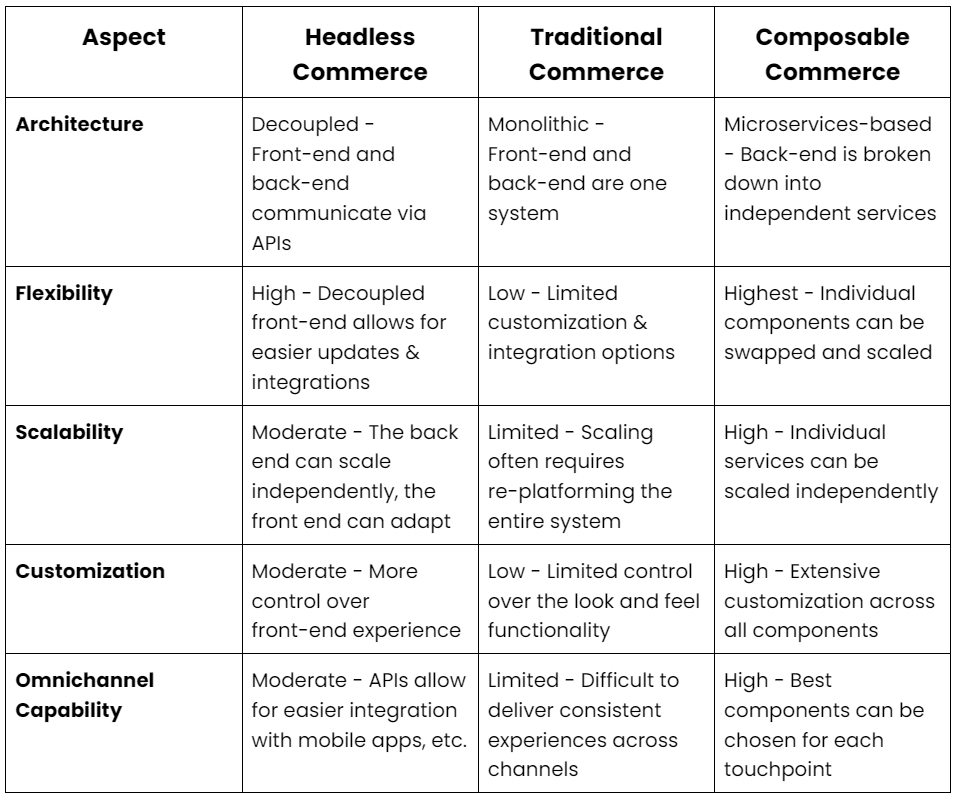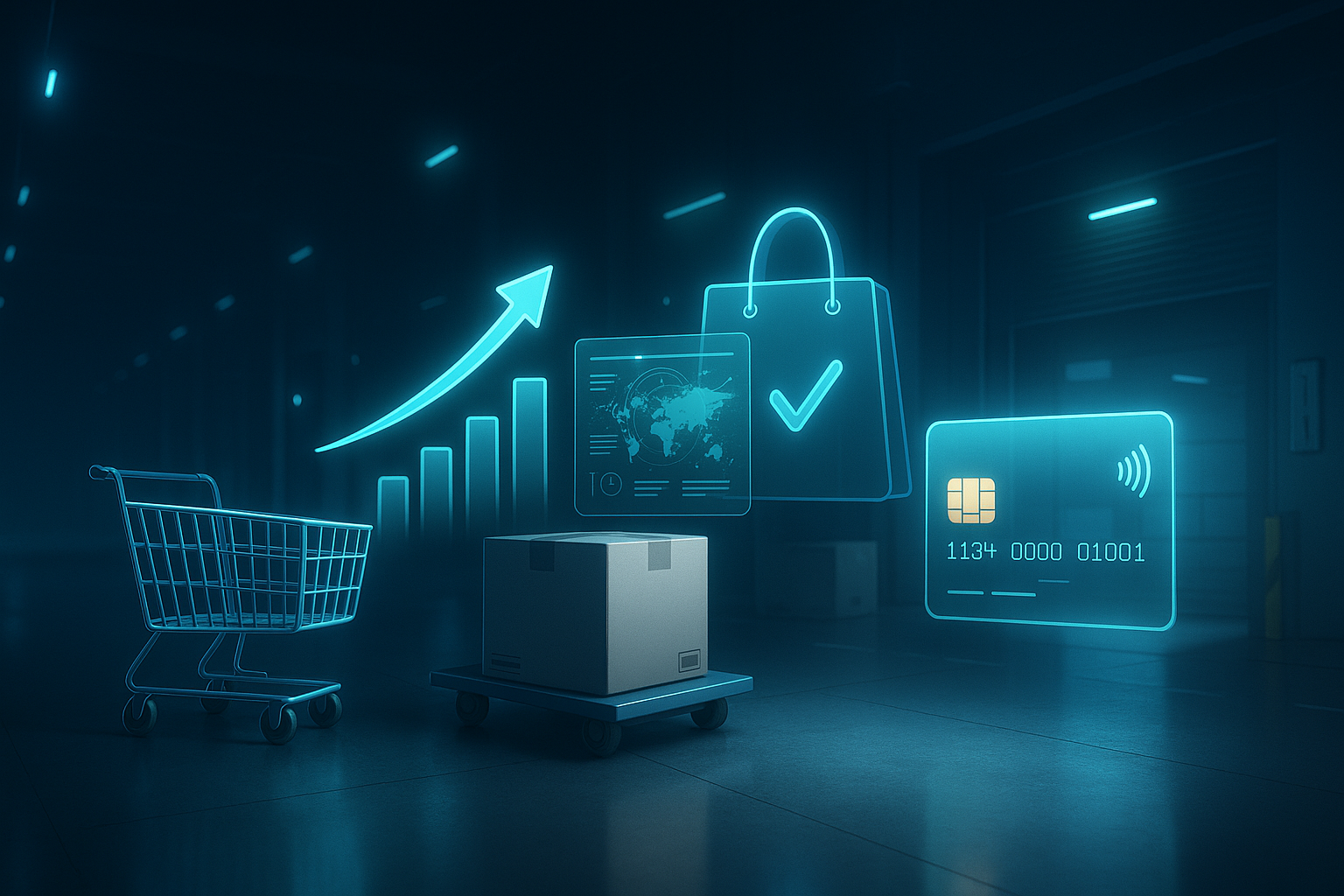

With over 26.5 million eCommerce websites worldwide, competition is inevitable, regardless of one’s niche. This market saturation has created the need for highly dynamic and personalized websites.
Enterprise headless commerce ensures one can do exactly that without complicating their website’s backend functionalities. If you want to leverage the many benefits of headless commerce, you have stumbled upon the right page. This blog is the one guide you would need to understand the crux of this innovative technology.
Short on time? Here are the key takeaways
- Headless commerce can highly benefit your website as it lets you customize its front end without affecting the back end.
- Some of the best headless commerce platforms are DJUST, Shopify, BigCommerce, and Adobe Commerce.
- Do not rush your decision and select a scalable, easy-to-integrate platform for your website. While most of these have monthly subscriptions, you must choose their custom plan for headless commerce.
What is headless commerce?
Headless commerce is a relatively new tech website owners use to disjoint their customer experience front from its back-end functionality. It is even named so because it essentially separates the “Head” (front end) of a website from its “Body” (back end).
By doing so, one can make custom changes, enhancing the website’s user experience without losing its back-end efficiency. This provides agility to the previously monolithic structure of a website and motivates developers to innovate further.
Headless commerce vs. traditional commerce vs. composable commerce
Although many have already adopted headless commerce, many people still use traditional and composable commerce. The following table compares the three to help you better understand their specific roles in the eCommerce ecosystem.

While all three have benefits, headless commerce stands out due to its flexible and customizable interface.
Why headless commerce is important for enterprises
Reports show that 72% of US companies are opting for a headless commerce architecture for more flexibility. Why? Because many eCommerce enterprises find themselves operating on older technologies, including monolithic architectures. This technological legacy can be a significant hurdle when it comes to improving efficiency and adapting to evolving customer expectations.
With complex sales cycles, diverse product lines, and the need to operate across multiple markets and channels, traditional eCommerce solutions often fall short for large-scale operations.
Hence, it becomes important to adopt headless commerce as the transformative solution for your enterprise. It provides the flexibility, scalability, and integration capabilities required for modern eCommerce business. By separating the front-end from the back-end, it allows enterprises to build adaptable systems that can quickly respond to market changes and new technologies.
4 benefits of Hheadless commerce for enterprises
If you choose to use headless commerce, you will gain the following benefits:
1. Flexibility and customization
Enterprises require solutions that can meet their complex business needs. Headless commerce offers greater flexibility in designing the front-end of an eCommerce site, enabling developers to use any programming language or technology stack they choose to build a custom and dynamic user interface.
For example, a construction equipment manufacturer can use a tailored front-end interface for showcasing their extensive product catalog, while the back-end handles complex inventory and order management systems independently. This allows front-end and back-end teams to work independently without the risk of disrupting each other's efforts.
2. Increased agility of the website
Enterprises need to respond swiftly to market changes and customer demands. With headless commerce, front-end updates can be made without impacting the back-end systems, enabling faster rollout of new features and improvements.
For instance, an automotive parts supplier can quickly launch a new feature that allows business clients to configure and order custom parts directly through the website. This front-end enhancement can be deployed rapidly without requiring changes to the underlying supply chain or order processing systems.
3. Low maintenance cost
The reduced development times and fewer required upgrades translate to lower maintenance costs. Additionally, the decoupled nature of headless commerce allows enterprises to focus on other aspects of business development, rather than maintenance.
4. Improved performance and scalability
Enterprises often experience fluctuating traffic and transaction volumes. A headless architecture allows for separate scaling of the front-end and back-end systems to handle peak loads efficiently. This ensures consistent performance even during high-demand periods.
Top headless commerce solutions for enterprises
There are many promising headless commerce solutions for enterprises in the market. However, the following are the best of the lot.
1. DJUST
DJUST boasts many lucrative B2B eCommerce features that you can use to enhance your target audience’s shopping experience. However, what makes it stand out is its exceptionally powerful catalog management tool.
Top Features
- Multi prices and offers: Easily manage countless offers at once, precisely linking them to products, variations, or customer groups. For instance, if you're a pharmaceutical distributor, you could set up a pricing system where pharmacies/clinics gets a 30% discount for bulk purchasing a particular drug, while simultaneously offering a buy-three-get-one deal on another drug.
- Custom catalogs: With DJUST, you can create custom catalogs to show only relevant products and prices to specific customer groups, avoiding information overload and enhancing the user experience. For instance, a wholesale food distributor could offer different product ranges and pricing tiers to restaurants, grocery stores, and catering companies. A high-end restaurant might see bulk options, while a small café would be presented with a more limited selection.
- Dynamic catalog: With this feature, you can establish automated rules that trigger actions and update your catalog in real-time. For instance, if you're an electronics retailer, you could set up rules to automatically categorize products based on their specifications. When a new smartphone is added to the inventory, it could be instantly assigned to categories like "5G-enabled," "High-resolution camera," or "Extended battery life" based on its features, without manual intervention.
Pricing
We offer customized solutions and the pricing depends on your specific needs. Request a demo with us to discuss the many possibilities with DJUST and what that would cost you.
2. Shopify
Shopify can be a powerful tool for headless commerce, offering a robust backend foundation with some key features to consider:
Top Features
- Diverse system integration: Integrate Mailchimp, Slack, Google Sheets, etc., with its apps created specifically for them.
- Built-in marketing tools: Run email marketing campaigns, create discount codes, and leverage SEO features to improve your store's search ranking.
Pros
Easy-to-use user interface with reliable hosting and server security.
Cons
Headless commerce is not available for all its plans. You will not get a highly customizable solution.
Pricing
Headless commerce is only available for Shopify Plus which has custom pricing plans. You can contact their team to get more information.
3. BigCommerce
BigCommerce positions itself as a headless-friendly platform, offering features that cater to building custom storefronts.
Top Features
- Headless app marketplace: Discover and integrate apps designed explicitly for headless commerce functionalities within BigCommerce.
- Built-in security: It handles backend security, letting developers focus on the front end without security concerns.
Pros
BigCommerce does not throttle API calls.
Cons
It is not a user-friendly setup, and you will require professional assistance.
Pricing
Its pricing generally starts from $29/month. However, you must request a custom quote for an enterprise-level requirement.
4. Adobe Commerce
Presently known as Adobe Commerce, Magento offers robust features for businesses seeking a powerful and scalable eCommerce platform.
Top Features
- B2B Features: Built-in features for managing complex B2B workflows like quotes, customer segments, and custom pricing.
- Advanced SEO: Offers comprehensive tools for optimizing your online store for search engines.
Pros
It is a highly customizable platform with great control over functionality and design.
Cons
You would need a Magento expert to completely leverage it and its features.
Pricing
It offers two packages, namely Commerce Pro and Managed Services. You would have to request a quote for both.
Although these platforms are highly promising, one might suit your needs better than the other. Hence, you should first understand what you want to achieve through a headless commerce enterprise and then select one of these.
Factors to consider when choosing a headless commerce platform
Before you select your ideal headless commerce platform, make sure it offers you the following:
- Security: eCommerce platforms heavily depend on online payments, but consumers would never transact on a questionable website. You need to ensure that the platform offers fraud protection and data backup. In addition, your website must be PCI (Payment Card Industry) compliant.
- Technical support: A telltale sign of reliable enterprise eCommerce platforms is their customer. Your ideal platform should offer you proper technical and customer support irrespective of the time of the day. It would be great if it could provide such support to your clients as well. And DJUST does just that – it offers a self-service portal for customers to manage their daily tasks seamlessly.
- Ease of integration: There’s no saying what turn your business might take in the future, or what it has seen in the past. Hence, you need a platform that lets you easily integrate any back-end system without any friction or risk of losing your data.
- Scalability: Your inventory, catalog, traffic, or transactions can increase anytime. You cannot change the platform every time there is a drastic increase. So, find a platform that will be able to accommodate such changes and offer modifications to sustain them.
- Automated interface: An AI-driven interface like DJUST’s lets you place orders automatically by simply reading order details from an email with zero manual intervention.
The Bottom Line
Companies worldwide have started to understand that their websites need headless commerce. Hence, you should integrate it into your website before your competitors do.
But no matter how enticing it sounds, you should not simply select the first platform. Instead, give it some thought, use this blog as a guide, and select the ideal platform for your eCommerce requirements.
If you don’t want to do a lot of digging, DJUST offers everything you need in a B2B eCommerce platform. You get everything from an easy-to-use customer portal and integration with backend systems to personalized customer catalogs and a self-service portal. To know more about how the solution can help your organization, book a demo now!

-modified.avif)



